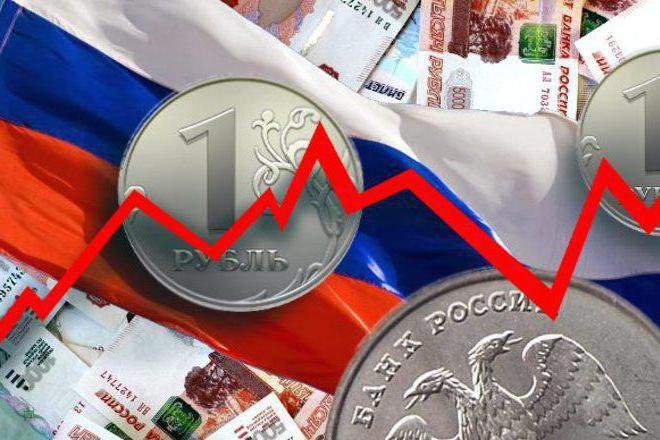Recently, in the report you can hear the word "stagnation". What it is is hardly understood by the majority of the population. However, journalists are not tired of repeating it regarding the situation in the Russian economy. In fact, everything is simple: the negative state of the economy, which is characterized by a long halt in trade, is stagnation. A synonym for this concept is stagnation. But the term "stagnation" sounds more harmonious, therefore it is more often used.

Stagnation: what is it in simple words?
Stagnation in the economy is a negative state characterized by rising unemployment, falling wages and a deterioration in living standards. During this period, production and trade are usually the first to suffer. However, discussing what is stagnation in simple terms, it is important to understand that this term does not necessarily mean a complete lack of growth. It may well be. For example, GDP of Russia in 2014 increased by 0.6%. But can such an indicator be called growth? There is stagnation. What is this indicator compared with the average for the last 10-15 years? Yes, in statistical reports there is a crisis year 2009. But in 1999-2013, the average GDP growth exceeded 5%. Thus, a growth of 0.6% is not growth, but rather stagnation. What are these simple words? A negative situation, when development can continue, but indicators are growing minimally. Classically, the stagnation period is considered to be the 1930s in the USA and the beginning of the 1990s in most post-Soviet countries.

Main features
When we try to understand what stagnation is in plain language, it is important to understand what are the key signs of this negative phenomenon. Among them:
- A sharp increase in unemployment. Enterprises, factories, and factories close, dismiss, or transfer their personnel to part-time jobs.
- Reduction of wages or their “freezing” for workers in the public sector.
- Significant decrease or deceleration of GDP growth.
- Deterioration of living standards in the country.
- Income tax increase.
- Increase in rents and other utility bills.
Types of Stagnation
- Monopolistic. It may be associated with an increase in the number of large companies in the economy. Entrance to the market is complicated, the number of competitors is reduced. Monopolistic stagnation is manifested in a decrease in growth rates, a decrease in the number of investments and incomplete loading of production capacities.
- Transitional. It often occurs when changing the way the national economy is managed. For example, in the transition from planned management of the economy to market. Manifestations of this type of stagnation can be avoided. Its main reason is the wrong actions of the national government, which run counter to economic laws. It is manifested in the inhibition of investment flows, the stop of scientific and technical progress, the destruction of production forces.

Causes and consequences
Now it's time to figure out how stagnation begins, what this phenomenon provokes. Among the key reasons are the following:
- Bureaucracy. Because of it, the government may be too slow to respond to changing market conditions. Sometimes even effective solutions cannot save the situation if it is already too late.
- Lack of reliable tools in the state to monitor the implementation of economic development plans.
- Inability of the country's leaders to learn from past mistakes.
- Decrease in financing of science. This leads to a lack of modernization of production and stagnation in development.
- Conservative type of government.
- Economic and political instability in the state and in the world.
- A large proportion of unskilled personnel in leadership positions.
- Lack of natural resources in the territory of the state.
The consequences of stagnation include:
- Strikes, coups, riots, revolutions.
- Unemployment growth.
- Decrease in production.
- The decrease in turnover.
- Salary reduction.
- Tax increase.
- Tighter penalties.
- Rising inflation.

Ways to fight
The duration of stagnation largely depends on the effectiveness of the state. In the fight against stagnation, the following steps are usually taken:
- Providing support to private enterprises. This increases their competitiveness and helps them fight the monopolists that have captured the market.
- Active financing of organizations.
- Modernization of production processes. New equipment allows to reduce the cost of production.
- Establishing partnerships with other countries, assisting exporters.
Stagnation in the Russian economy
Since the beginning of 2014, a decrease in economic growth has been noted in the Russian Federation. This is primarily due to the fall in energy prices. The state is still extremely dependent on oil and gas exports. The energy sector is strategic for the Russian Federation, it has a high share of state ownership. The oil and gas industry provides about 16% of the gross domestic product and half of the federal budget. Therefore, stagnation in the Russian Federation has not only internal, but also external causes.  If the former can be controlled at least somehow by making management more efficient, then structural changes are needed to remove the latter, which will take years. The level of international reserves in the country decreased to the level of 2007, and inflation reached 4%. However, the World Bank and the IMF forecast a recovery in the Russian economy in 2017. However, many experts predict long years of stagnation of the Russian economy.
If the former can be controlled at least somehow by making management more efficient, then structural changes are needed to remove the latter, which will take years. The level of international reserves in the country decreased to the level of 2007, and inflation reached 4%. However, the World Bank and the IMF forecast a recovery in the Russian economy in 2017. However, many experts predict long years of stagnation of the Russian economy.